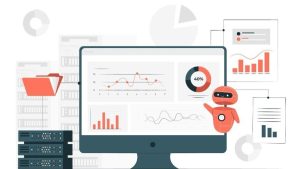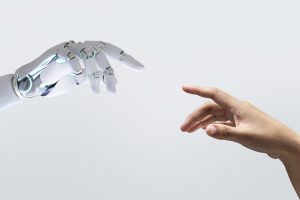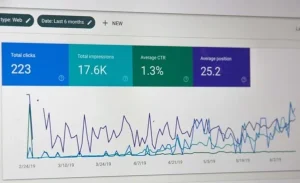A key feature of Industry 4.0 is IoT devices (Internet of Things), which enable the transformation of manufacturing processes. These devices are pieces of hardware, such as sensors and appliances, that are all connected, enabling communication between them that provides insights from data analysis. In the context of manufacturing, this valuable data is often regarding the functionality and progress of industrial processes, and it can be extremely valuable to utilize to streamline processes.
IoT further drives manufacturing processes when combined with the latest developments in software. From sensor data collection to quality control, this software is changing the way data is collated, analyzed, and utilized from IoT devices, and efficient usage of IoT-driven operations can transform a traditional manufacturing plant into a smart factory. With our expertise in maintenance and support, at Code4Nord, we understand just how vital operational efficiency is, and we possess the knowledge to help you revolutionize your manufacturing processes.
In this article, we’ll explore how software development and IoT devices can transform the industrial production process and the tangible benefits they bring.
The Uses and Benefits of IoT in Manufacturing
IoT devices can be utilized in numerous ways in a manufacturing plant, but here are some of the most notable ways they can be used, alongside IoT-driven software, that can make your processes more efficient and streamlined.
Improved Productivity
The real-time data collection that IoT software enables allows for machinery monitoring and productivity analysis. In this sense, IoT devices and software in manufacturing can identify bottlenecks in the processes and adjust production to address these issues, thereby improving productivity in manufacturing.
Reduced Costs
A key feature of IoT devices and software in manufacturing is its ability to reduce costs. IoT-powered manufacturing can signal when a device is not operating at full capacity, and by tracking equipment performance in this way with IoT sensors, it collects data about potential failures and can schedule predictive maintenance before the machinery entirely breaks down and causes production downtime. While IoT devices may be initially costly to implement, in the long run, they are valuable assets that add to the overall strategy with their valuable analytics.
Resource Allocation
Manufacturing creates a great deal of waste, and not only does this exacerbate costs, but it also contributes negatively to the environment. With manufacturing creating 37.01 billion metric tons of carbon emissions in 2023, reducing costs through effective resource allocation saves your operations revenue, and helps the planet, too. IoT devices and software in manufacturing capture real-time data, allowing for data-driven decision-making to take place around effective resource allocation in manufacturing. These connected devices, altogether, can streamline production.
Energy Consumption
Another vital feature of IoT devices and software in smart factories is energy monitoring. Manufacturing operations create a lot of energy, but by implementing IoT sensors at key stages of the manufacturing process, real-time data can be gathered regarding energy usage, which can aid decision-making processes, as this data can help guide how to reduce wasted energy.
ERP and MES Integration
ERP (Enterprise Resource Planning) and MES (Manufacturing Execution System) are two software systems that are commonly used in manufacturing settings, particularly smart factories, and can also be integrated with IoT devices and software. The IoT sensors that collect data can be fed into these existing systems, with MES enabling real-time monitoring and analysis, and ERP can update inventory levels and production schedules to further improve operational efficiency.
Real-world Application of IoT
The outcomes IoT devices and IoT software can deliver to industrial production are extremely valuable to transforming manufacturing processes, and this is something that Siemens implemented to drive further transformation in their manufacturing.
Siemens implemented its IoT platform, MindSphere, which is a cloud-based IoT system that connects systems with machines, with the goal of achieving manufacturing-driven digital transformation. This was adopted through the installation of IoT sensors throughout their manufacturing facilities, all of which gathered data on the production process, such as:
- Energy consumption
- Machine performance
- And environmental conditions
This data was collated and analyzed by MindSphere, which provided insights that would optimize their manufacturing operations. This implementation of IoT devices and IoT software in their manufacturing processes achieved a 12% reduction in energy usage, an 18% reduction in defect rates, and it enhanced operational visibility, which meant issues could be responded to quickly, which made operations more efficient, and also reduced costs overall.
IoT Software Solutions and Code4Nord
IoT devices and IoT software are transforming a plethora of industries, especially industrial production processes. They’re able to reduce costs, improve efficiency, and increase productivity in manufacturing with ease, driving innovation in this sector, particularly when they’re tailored specifically for industrial applications.
At Code4Nord, we have expertise in developing IoT-driven software solutions tailored for industrial applications so your operations can profit from these same benefits and truly transform your manufacturing plant into a smart factory of the future. Contact us today for a consultation on how IoT software solutions can optimize your manufacturing processes and drive innovation.


